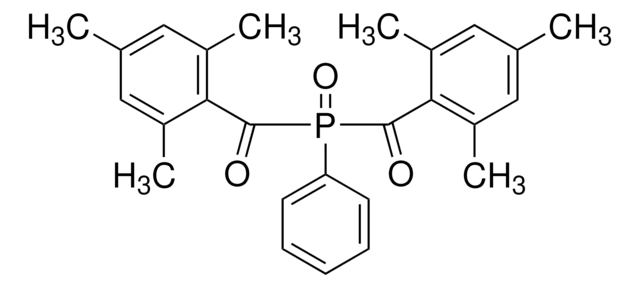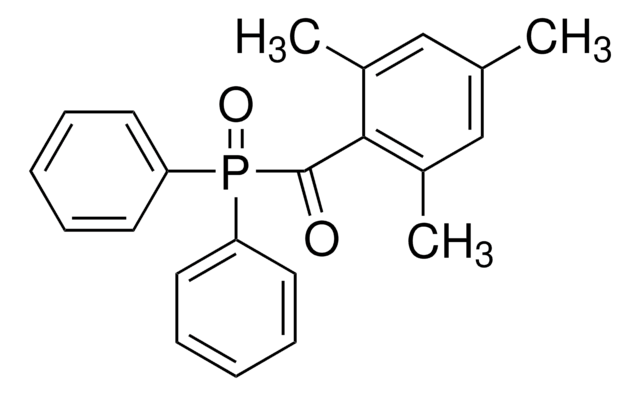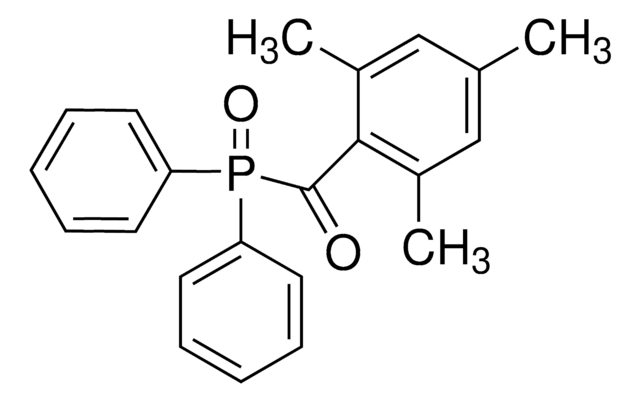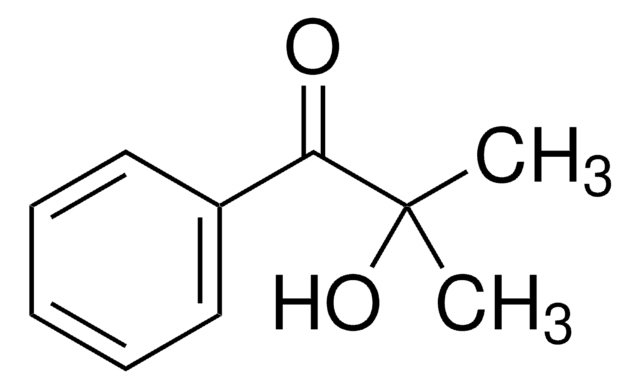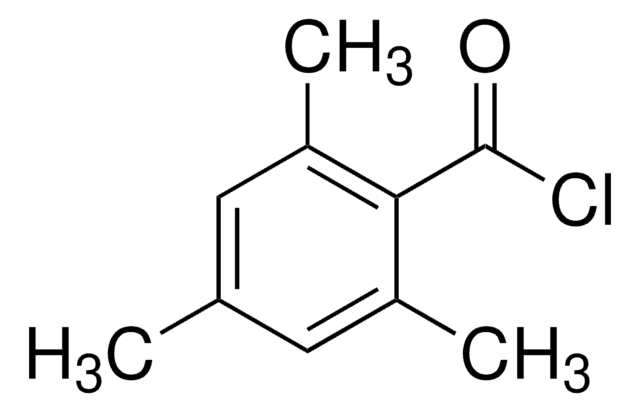모든 사진(1)
About This Item
실험식(Hill 표기법):
C16H16LiO3P
CAS Number:
Molecular Weight:
294.21
MDL number:
UNSPSC 코드:
12352128
NACRES:
NA.23
추천 제품
Quality Level
분석
≥95%
양식
crystalline powder
색상
white to off-white
저장 온도
2-8°C
SMILES string
CC1=C(C(P(C2=CC=CC=C2)(O[Li])=O)=O)C(C)=CC(C)=C1
유사한 제품을 찾으십니까? 방문 제품 비교 안내
애플리케이션
Lithium phenyl-2,4,6-trimethylbenzoylphosphinate (LAP) is a water soluble, cytocompatible, Type I photoinitiator for use in the polymerization of hydrogels or other polymeric materials. This photoinitator is preferred over Irgacure 2959 for biological applications due to its increased water solubility, increased polymerization rates with 365 nm light, and absorbance at 400 nm allowing for polymerization with visible light. The improved polymerization kinetics enable cell encapsualation at reduced initiator concentration and longer wavelength light, which has been shown to reduce initiator toxicity and increase cell viability.
특징 및 장점
- Superior water solubility
- Biocompatible
- Sensitiveto visible light
Storage Class Code
11 - Combustible Solids
WGK
WGK 3
Flash Point (°F)
Not applicable
Flash Point (°C)
Not applicable
이미 열람한 고객
Benjamin D Fairbanks et al.
Macromolecules, 44(8), 2444-2450 (2011-04-23)
Various techniques have been adopted to impart a biological responsiveness to synthetic hydrogels for the delivery of therapeutic agents as well as the study and manipulation of biological processes and tissue development. Such techniques and materials include polyelectrolyte gels that
Benjamin D Fairbanks et al.
Biomaterials, 30(35), 6702-6707 (2009-09-29)
Due to mild reaction conditions and temporal and spatial control over material formation, photopolymerization has become a valuable technique for the encapsulation of living cells in three dimensional, hydrated, biomimetic materials. For such applications, 2-hydroxy-1-[4-(2-hydroxyethoxy) phenyl]-2-methyl-1-propanone (I2959) is the most
Pui -Yan Lee et al.
Pharmaceutical research, 37(11), 220-220 (2020-10-15)
Gold porphyrin (AuP) is a complex that has been shown to be potent against various tumors. A biocompatible interpenetrating network (IPN) system comprised of polyethyleneglycol diacrylate (PEGdA) and chemically-modified gelatin has been shown to be an effective implantable drug depot
Juliana S Ribeiro et al.
Biomacromolecules, 21(9), 3945-3956 (2020-08-14)
Oral bacterial infection represents the leading cause of the gradual destruction of tooth and periodontal structures anchoring the teeth. Lately, injectable hydrogels have gained increased attention as a promising minimally invasive platform for localized delivery of personalized therapeutics. Here, an
Joshua D McCall et al.
Biomacromolecules, 13(8), 2410-2417 (2012-06-30)
Photoinitiated polymerization remains a robust method for fabrication of hydrogels, as these reactions allow facile spatial and temporal control of gelation and high compatibility for encapsulation of cells and biologics. The chain-growth reaction of macromolecular monomers, such as acrylated PEG
문서
The introduction of LAP and water-dispersible photoinitiator nanoparticles of TPO, enables the development of novel formulations for 3D bioprinting, tissue engineering applications, and device manufacturing.
관련 콘텐츠
Tissue engineering fabricates tissues cultures from scaffolds, living cells, and biologically active molecules by simulating the microenvironment of the body to repair or replace damaged tissue.
Global Trade Item Number
| SKU | GTIN |
|---|---|
| 900889-1G | 4061826648209 |
| 900889-5G | 4061833333433 |
자사의 과학자팀은 생명 과학, 재료 과학, 화학 합성, 크로마토그래피, 분석 및 기타 많은 영역을 포함한 모든 과학 분야에 경험이 있습니다..
고객지원팀으로 연락바랍니다.

